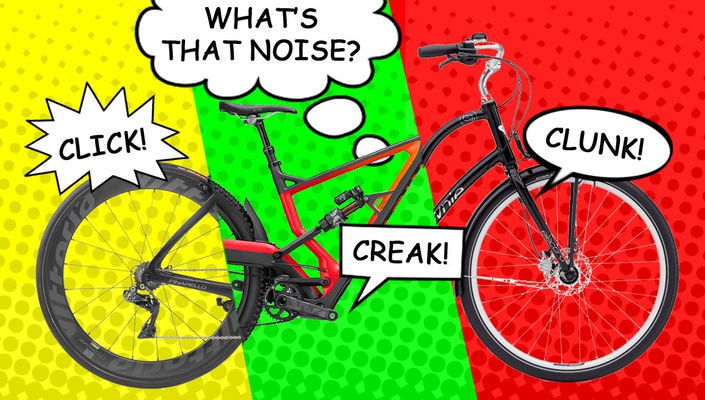A noisy bike is one of the most irritating sounds you can handle. I’m not talking about the sounds of a high quality rear hub, or the sound of an electric drivetrain sliding a chain into place. I’m talking about that annoying click on every rotation of your pedals, or that front brake squeal while you are slowly grinding up the steepest part of your climb. Even if these sounds don't bother you at all — you might tune them out listening to music while you ride — it is still best to have a closer look or to have a qualified bike shop investigate where any unwelcome noises are coming from. Maintaining your bike in this way will prevent premature component wear as well as guarantee your safety.
Diagnose before disassembly
In my experience, I have found it’s great to get a second opinion, other than your own, to diagnose sounds coming from your bike. Sometimes it may even be a two-person job to find certain sounds. One person wiggles different parts, one person looks, listens, and feels the bike to find where it’s coming from. “I don’t know what I did, but I fixed it,” are words that were just spoken the other day by one of my bike techs. This is a great result, but how do we know we have prevented it from happening again? I like to zero in on the sound or noise a bike is making: get a general idea of where it’s coming from and replicate it as many times as I can before I determine the plan of attack. This is also a great idea to cut some of the time and research a shop might need to do. Here are a couple examples of what this might look like.
Bike Shop Service Tech: “Do you know where the sound might be coming from?”
Customer: “I don’t know, like everywhere.”
This answer is all right; it’s okay not to know where the sound is coming from. That’s what these service guys are for. But even a little bit of information can prevent a bike tech from having to take your bike out for a long ride to determine where these sounds are coming from.
Bike Shop Service Tech: “Do you know where the sound might be coming from?”
Customer: “Well, I think it’s coming from the crank area. I hear a creak when I’m pedalling — not all the time, just when I apply more pressure going up steeper hills.”
The problem does not have to be solved before going in, but to have just a little bit of information to feed the tech can speed up the process of repair and save you money.
Don’t be mean, keep it clean
Keeping up with cleaning your bike can go a very long way toward preventing unwanted sounds, especially after a muddy ride or even a ride through dusty terrain. That dust and dirt will work its way into every crevice on both bike and rider. If you think engineered bike wash is the only product you can use to clean your bike, this is not true. Soapy water and a couple soft bristled brushes will be able to get the job done just fine. If you want to go the extra mile, you can designate a couple toothbrushes to get into the tighter spots to make it look new. I like to focus on the brakes and drivetrain to make sure they are clean, after washing make sure to dry your chain, then re-lube to prevent rust and corrosion.
What’s that sound?
I want to go over a few of the most common sounds you might find and offer some suggestions to what may be causing them. Many of these are applicable to most bikes, and some are specific to full suspension mountain bikes.
Creaks
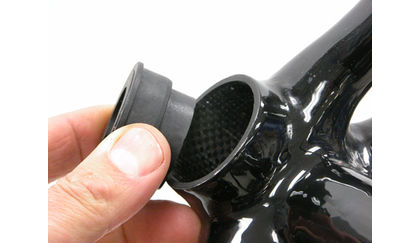
Like the hinges of the door to the basement, opening slowly in a spooky house. The bottom bracket (crank bearings) is usually the one most picked on and wrongly accused of creating such a harsh sound. With so many carbon frames on the market using press fit bottom brackets, it might make sense that maybe dust slipped in between the frame and cups. It's not usually the case — the tolerance is very tight and will even scrape the assembly grease off when installed. Instead, this creak is almost always caused by a lower main pivot, and most of the time cleaning and re-lubing is the simple solution.
If you have a newer bike that has a direct mount chainring, I’ve found that it may be under torqued from factory causing a tiny bit of play and noise, too. That one was tricky to spot, but is a good reminder that proper tightening of components to spec, but not overtightening, is important.
Clicks and Ticks
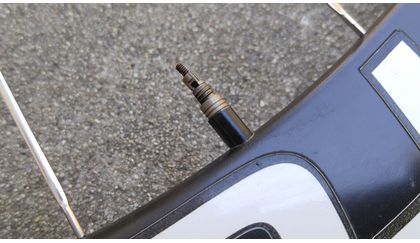
These can be a little harder to find and are usually rhythmic. Start by spinning each wheel, one at a time, to see if you can isolate the sound to an action or movement. Sometimes you get lucky and it is as easy as the shifter cable poking off your derailleur and touching the wheel spokes. It could be the click is coming from your pedal, echoing through your frame. It might even be a tube valve stem tap-tapping against a slightly larger valve hole, in which case a little electrical tape is all you need.
Wheel axles can be to blame, so double-check that your wheels are placed correctly in the front and rear dropouts and that quick releases, thru axles, or axle nuts are set and tightened to spec.
A rear derailleur could be the culprit, though you usually know because you hear it as well as feel it as you pedal. Solving that can be as simple as some easy adjustment, but if you find no amount of adjusting will do, the derailleur and/or derailleur hanger might be bent.
Clunk or Knock
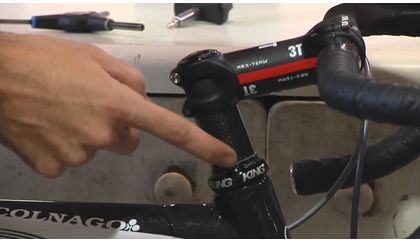
These are usually a little more jarring and often feel like the most damage is being done as a result of a loud clunk or knock. The first thing I check when my bike has a clunk is the headset, the most common clunk in the front end. While holding the front brake with one hand, put your fingers on the top headset cup and rock the bike back and forth. Feel and watch for any play, and if there is, get the headset adjusted and tightened.
A piece of suspension bottoming out of its travel will give you a harsh clunk. This one is easy to diagnose because you just pushed the limits of your bike and you know it. However, the suspension may have valving not working how it should or coming loose internally, resulting in a clunk or knock on the transition between compression and rebound. Safety matters are at hand in this case, so get it serviced.
Squeal and Squeak
There is a major difference between these two and it chaps my crack when they are mixed up. Think of a metal squeal or rubber squeak. Any metal on metal sound is almost always disc brake pads. If they are completely worn out, the metal pad clip or backing is touching the rotor. There are not too many other places you can have a metal on metal kind of squeal.
A rubber squeak can come from any of the spinny bits that have a seal to keep out water and the elements. Hubs, pedals, headsets, and bottom brackets of all different makes can have a seal like this. You want to inspect each area independently to identify where that little squeak is coming from. Luckily, once you find it, a drop of chain lube can solve the problem and keep you sane on the climbs up the trail.
ARRR! I still can't find where that noise is coming from.
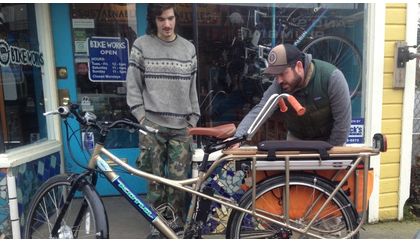
Whether you have the time or the tools to fix it or not, make your best attempt at identifying the location of the sound by doing some component diagnosis on your own. Rocking the bike while putting your fingers on the pivots and bearing locations, and spinning each bearing center can help target these sounds by process of elimination. Of course, there are lots of spots a noise can come from, and what sounds like it comes from one place may actually be coming from another. This is where the help of a bicycle technician can really pay off — someone who has probably figured out "that noise" before and has the experience and tools to shut it up by fixing it correctly.
A quiet bike is the sound of a properly functioning bike; addressing the harsh noises your bike creates will keep its general maintenance up and prolong the life of the components.
Don't see your noise? Got a suggestion for how you solved yours? Ask for help and share your ideas in our Rider's Forum.
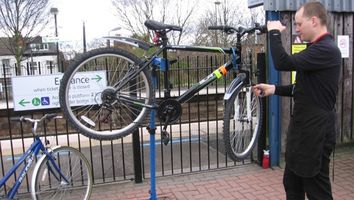
RELATED ARTICLE:
Bike safety checklist: Important checks to make before you ride
Routine pre-ride checks are an important part of your bicycle maintenance routine. They not only ensure that your ride goes smoothly and free from disastrous mechanical failure, but are... READ MORE
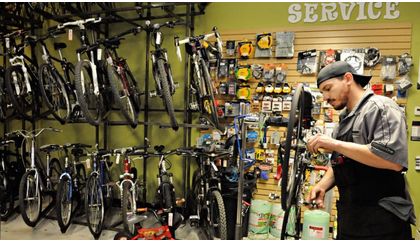
RELATED ARTICLE:
How to get faster and better service at a bike shop
Need your bike serviced ASAP? Or wondering if you can get a better price on that new saddle? BikeRoar has some great advice on how to get faster and better service at your local bike shop... READ MORE
